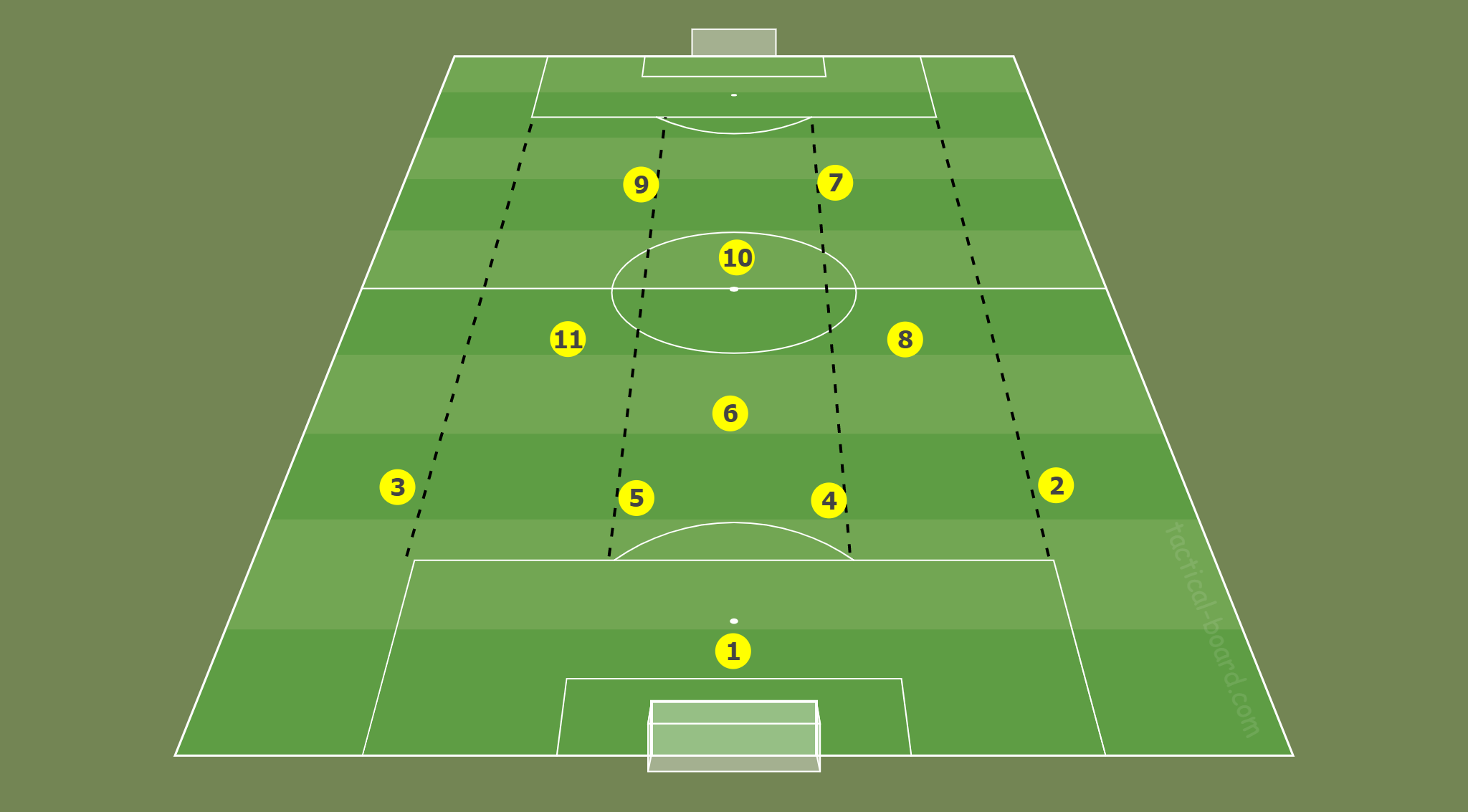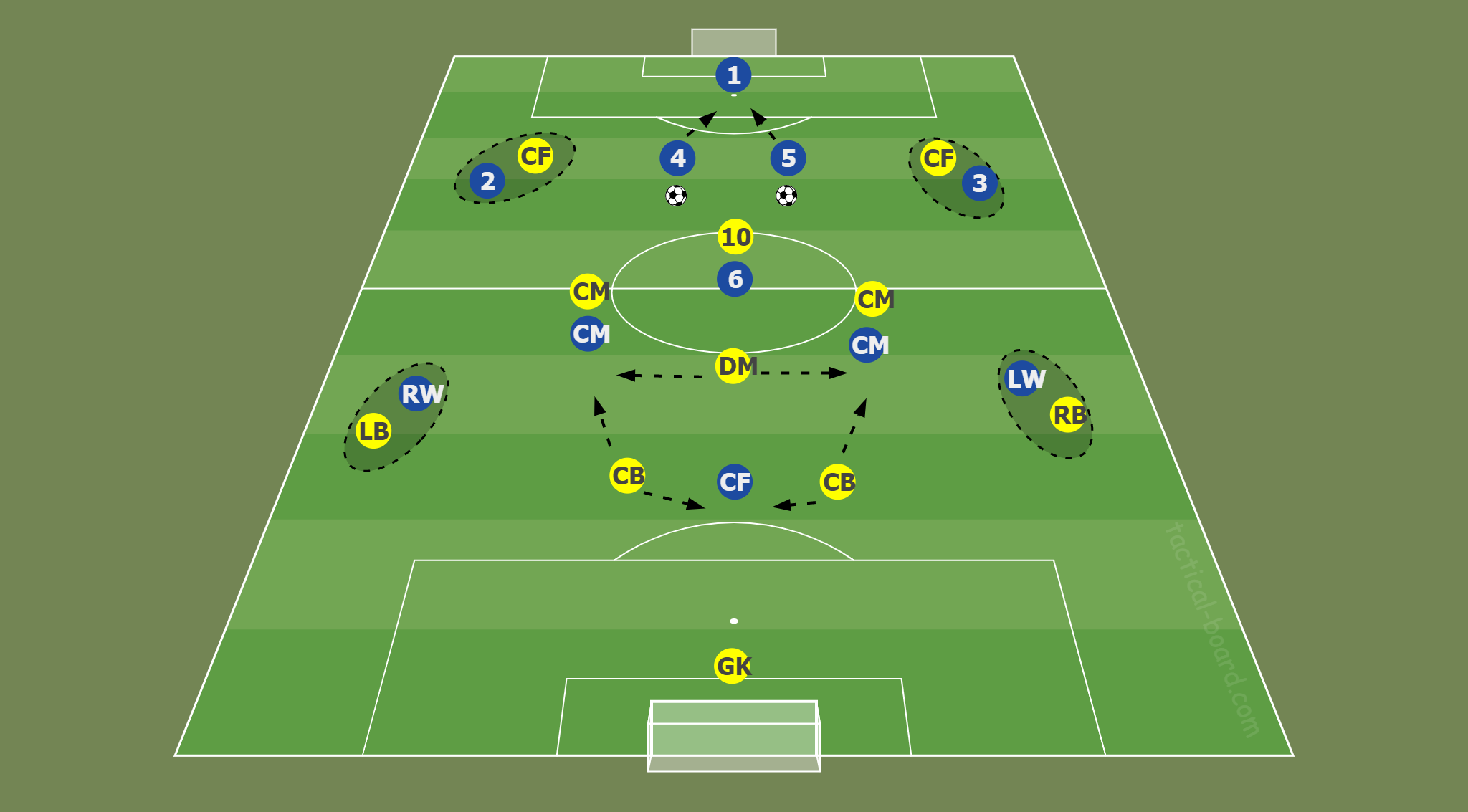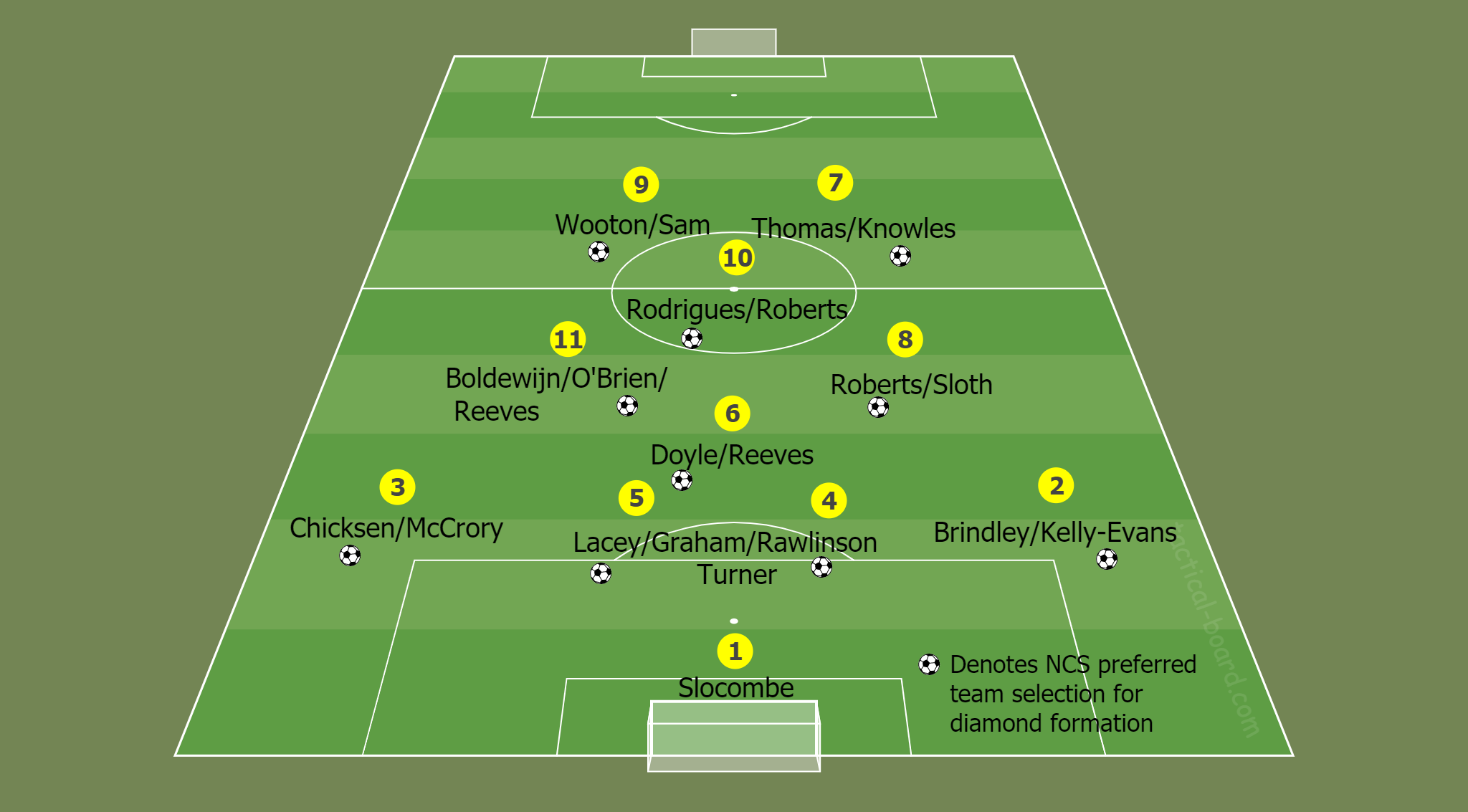On the face of it Notts have been somewhat creative in their player recruitment during closed season. The additions of Jake Reeves, Ruben Rodrigues and Casper Sloth bring with them a mixture of experience and technical ability to a midfield already boasting the likes of experienced campaigners Michael Doyle and Jim O’Brien as well as the creative wide men Enzio Boldewijn and Cal Roberts.
Left Back Adam Chicksen joins with a pedigree that brings with it high expectations and the return of Sam Graham helps to bolster the center of defence providing back up and competition for Connell Rawlinson, Alex Lacey, and an injury prone Ben Turner.
Up front last seasons pairing of Kyle Wootton and Wes Thomas will be joined by the towering Belgian Elisha Sam and Mansfield loanee Jimmy Knowles.
It seems that Neal Ardley intends to go all vogue on us for the upcoming campaign with a desire to master a diamond formation clearly high on his agenda.
So just what exactly is the Notts boss trying to achieve by introducing a system that wouldn’t usually come naturally to a squad playing in the fifth tier of the football pyramid, and what are the benefits, and indeed the pitfalls of such a system, and finally who in the squad is best suited to a diamond formation?
The high press
Its clear that last season Notts were susceptible to teams that played the high press and struggled to deal with this effectively, often seeing the ball passed back and forth between defenders and the goalkeeper before a long hoof gave away possession or an attempt to play out from the back was smothered.
The inability to deal with the high press has been a constant feature of Ardley’s teams since becoming Notts manager so you can perhaps forgive him for trying something different.
The idea of a diamond formation is to counter this with a high pressing system of your own that should in effect nullify the opponent’s efforts.
If executed correctly a high pressing attack minded diamond can be very rewarding, but if it doesn’t quite click the defensive weaknesses become all too apparent and I believe this is what we witnessed in the FA Trophy semi-final defeat to Harrogate.
The diamond is quite a compact formation relying on full backs to offer width when attacking and requiring two very energetic box-to-box type central midfielders.

From a defensive point of view the diamond has a naturally staggered shape making it difficult for the opposition to play line breaking diagonal or vertical passes through the midfield generally forcing the long ball. Having a defensive midfielder adds a degree of protection to the back four.
The first job of the two forward players is of a defensive nature by constantly closing down and putting pressure on the oppositions defence making it difficult for them to mount any meaningful attack which is defined in the example below. The forwards are positioned between the oppositions center backs and full backs blocking off any potential attack down the wings.
This now leaves us with a numerical advantage in the midfield and our full backs are covering any attacking wide players leaving the opponents defenders just two options, pass back to the keeper or lump it long to where our defenders should be able to mop up.

Having four central midfielders allows the manager to make substitutions that don’t affect the shape of play but could counteract any weaknesses without moving players too far from their original starting positions.
The diamond can be used effectively to force errors and regain possession in a number of ways. This might include setting a pressing trap, forcing the opponent into the centre where the midfield ball winners can collapse in numbers on the opposing player in possession, stifling any passing threat. Equally, the fluidity of a diamond midfield means that the opposition can be forced out wide if their threat is more central and can adapt if the opposition manage to work through the phases.
Vulnerability
Unfortunately, there are elements of the diamond which if not executed effectively leave you vulnerable when the opposition mount an attack.
There is a reliance on the full backs to provide the wide attacking threat making them susceptible to getting caught with a long ball and no defence cover in behind them in wide areas.
If the midfield four don’t work as a unit they can be dragged out of position causing gaps to open up for the opposition to exploit including switching play from one flank to another.
Square pegs, round holes?
If Ardley is to persist with the diamond he has to be sure the players are capable of undertaking the role being asked of them. This might be controversial, but I would argue that both Boldewijn and Roberts are better suited to a formation that utilises wide players rather than a compact diamond, although it is not beyond the realms of possibility to see Roberts slotted in as a no.10 although it seems that role is likely to go to newcomer Rodrigues.
If there is an insistence to play both Doyle and Reeves, then I would suggest Doyle has to be the defensive ball playing midfielder at the bottom of the diamond meaning Reeves has to play in one of the center midfield roles. If this were the case, then that would mean either O’Brien or Sloth have to fill the other center midfield positions.
This will arguably create a stronger and more combative midfield as well as maintain a level of creativity in attack.
And here lies the conundrum for the manager, if fit how do you leave out potential match winning players like Roberts or Boldewijn for the sake of sticking with a formation? Of course, with games scheduled to come thick and fast then players will be rotated, and formations changed, but this won’t be without its challenges.
Here are just some of the selection permutations that present themselves when considering a diamond formation with the current squad. For what it's worth my preferred team selection is denoted by the small football.

In conclusion Notts fans should probably be enthused about the tactical shift. Embracing a new footballing philosophy coupled with the readily available analytical data from Football Radar can only be a good thing and highlights the ambition and vision the owners and manager have for the club, which in itself sets out a footballing blueprint for the future.
If Neal Ardley and his players do get to grips with the midfield diamond it will offer quick and fluid interconnecting play through the phases which will not only be great to watch (if we are ever allowed back again) but might just be the edge the Magpies need to mount a successful promotion campaign.